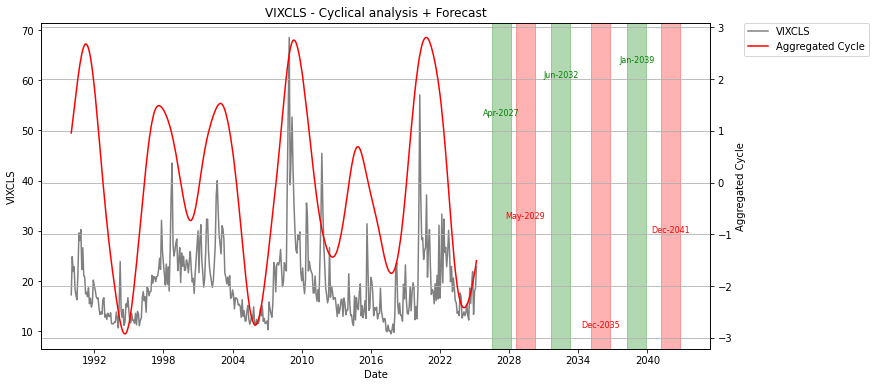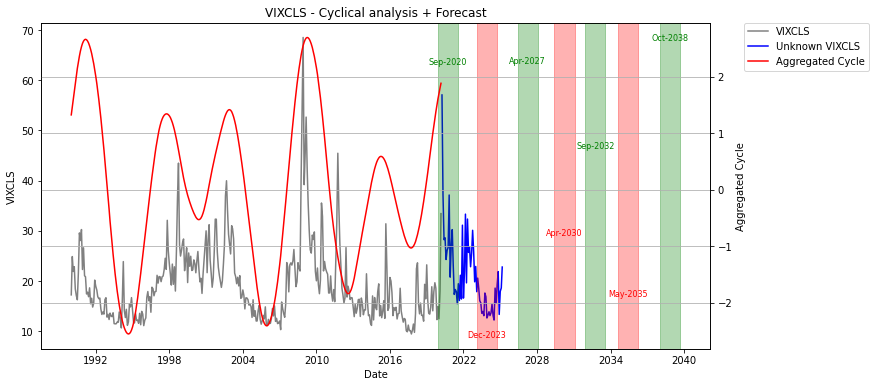If you’ve found the markets a bit too wild for your taste lately, I have news you won’t like: according to cyclical analysis, volatility isn’t going anywhere anytime soon. The VIX, Wall Street’s “fear gauge,” is set to rise steadily and remain elevated all the way into April 2027.
Does that mean we’re doomed? Not necessarily. Volatility, after all, is just part of the financial landscape—a reflection of uncertainty, risk, and shifting expectations. But the cyclical trajectory we’re seeing is clear: the next few years, shaped by Trump’s presidency and his erratic economic policies, are likely to be more volatile than the last.
We’ve already had a taste of this. The market swings over Trump’s incessant tariff threats, abrupt policy shifts, and diplomatic blunders are just an appetizer. Investors, business leaders, and policymakers should expect turbulence to be the rule, not the exception.
Here’s what our cyclical analysis tells us: the VIX bottomed in December 2023, and since then, it’s been rising—and it will continue to climb, peaking around April 2027:

Trump’s presidency, marked by impulsivity, confrontations, and tariff-driven uncertainty, will keep markets jittery, investor nerves frayed, and policy reactions unpredictable.
Does cyclical analysis actually work for predicting volatility? Indeed, it does—and remarkably so. Let’s rewind five years. Back then, our analysis indicated a VIX peak around September 2020, followed by a bottom in December 2023. The actual historical data (shown in the chart below) confirms the prediction almost perfectly.

So yes, the cycle is real, predictable, and powerful. And right now, it’s sending us a clear signal: Trump’s presidency won’t just be noisy—it’ll be volatile. Higher volatility isn’t always a disaster, but it’s a sure sign that markets, investors, and policymakers will need to remain alert, agile, and prepared for sudden twists.
Fasten your seatbelts—volatility is here, and it isn’t leaving anytime soon.

